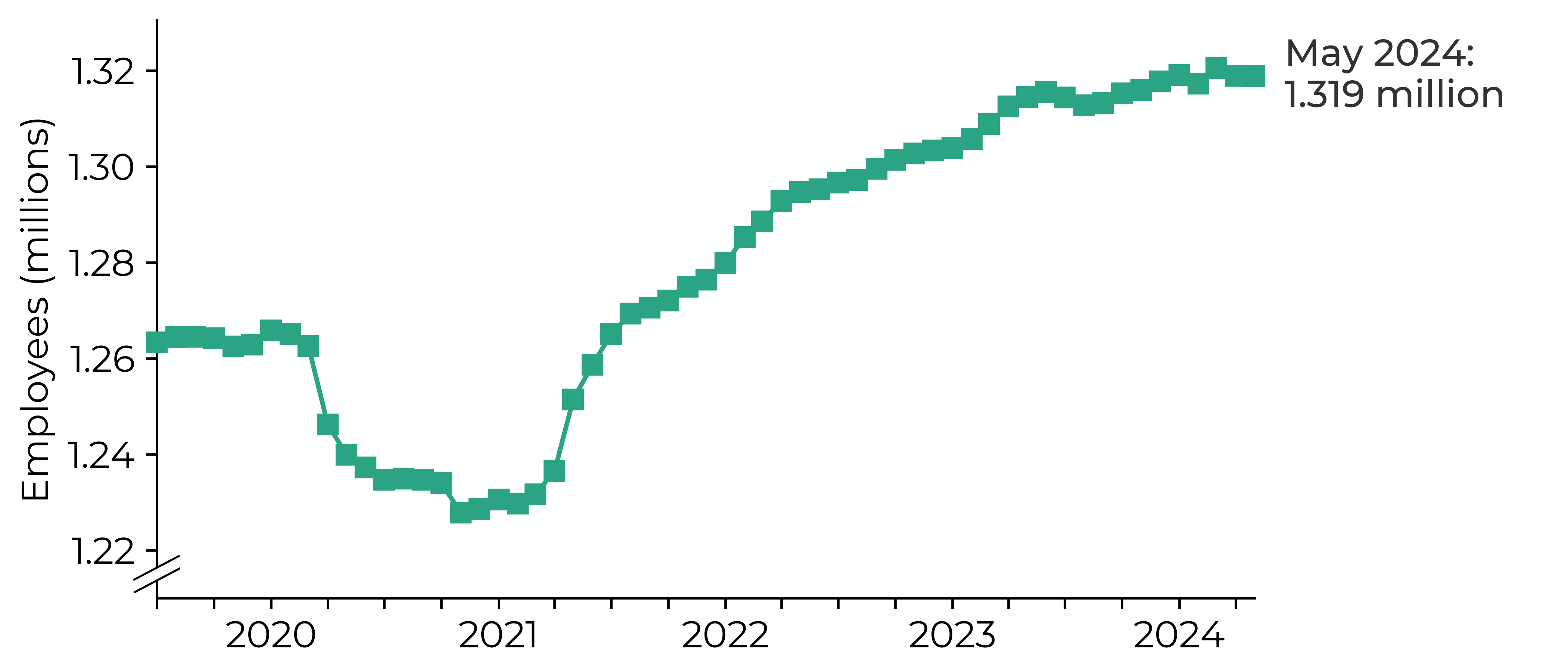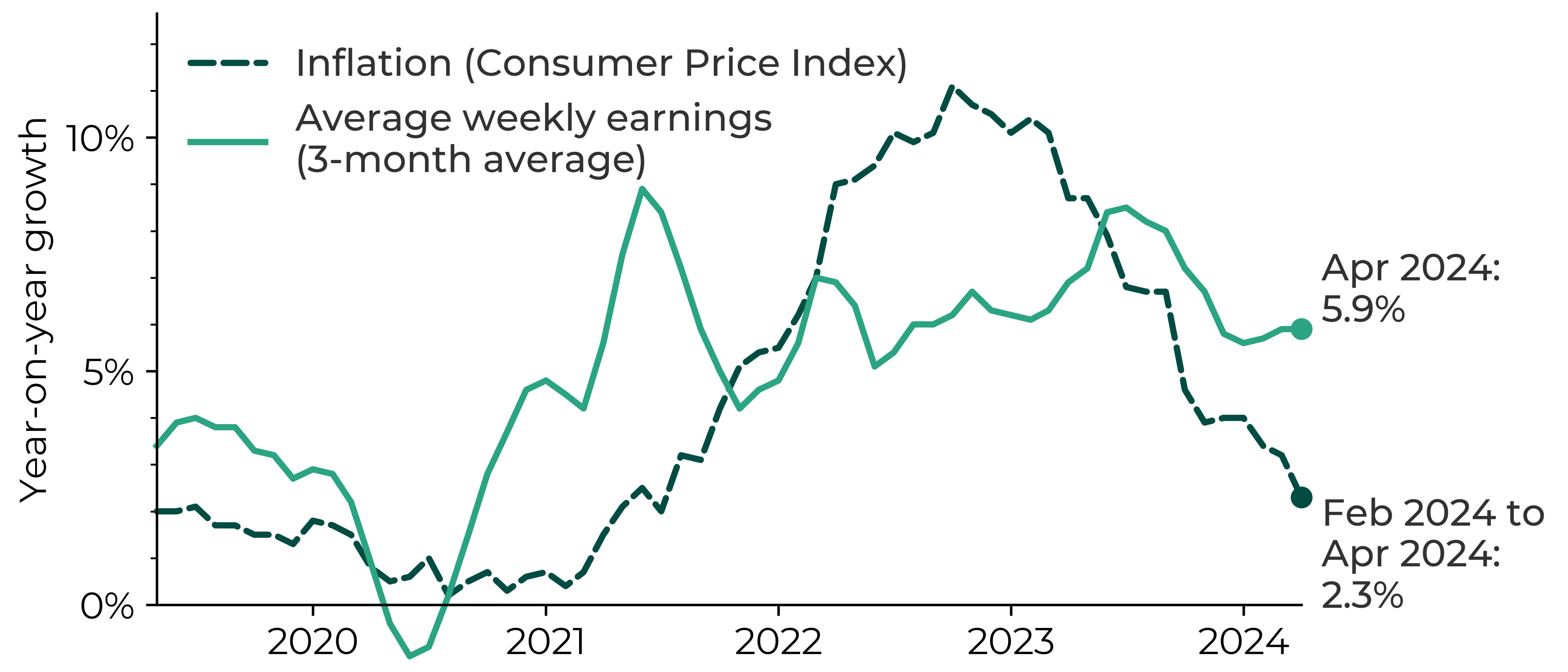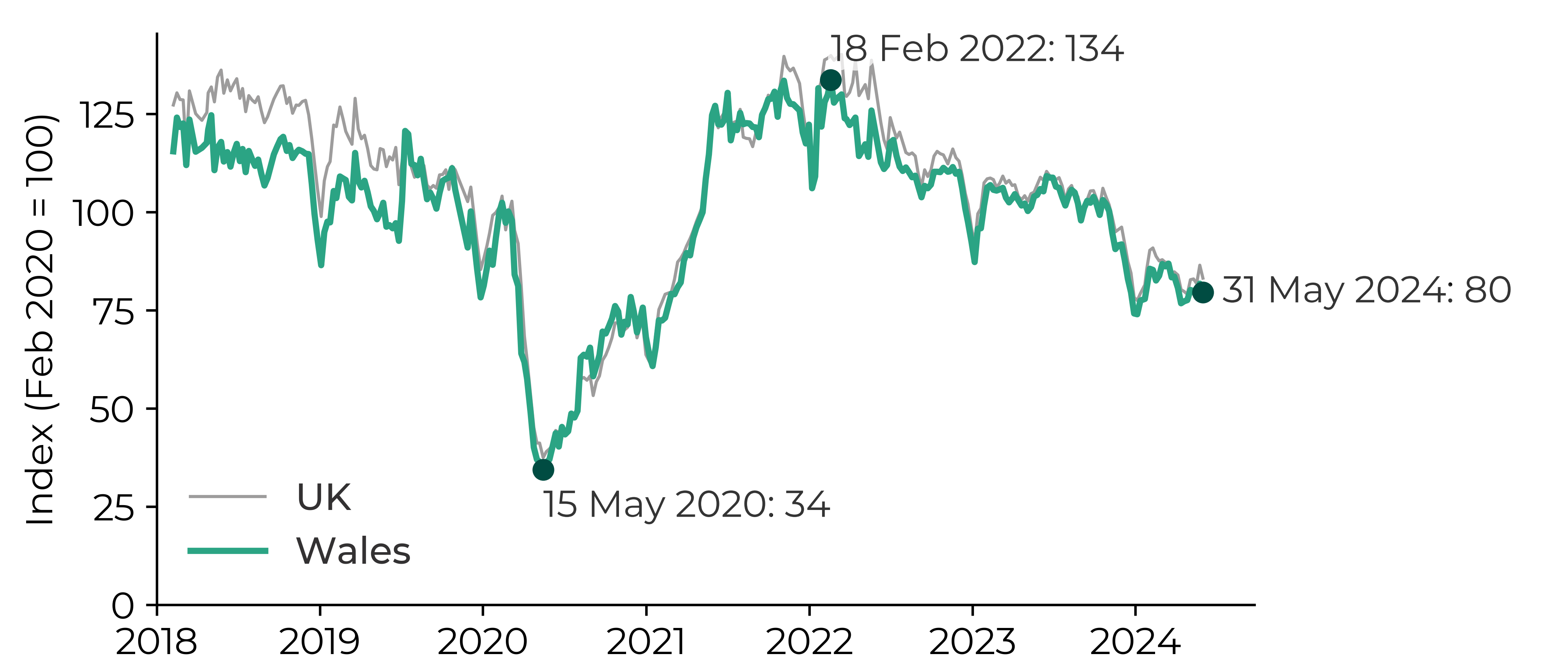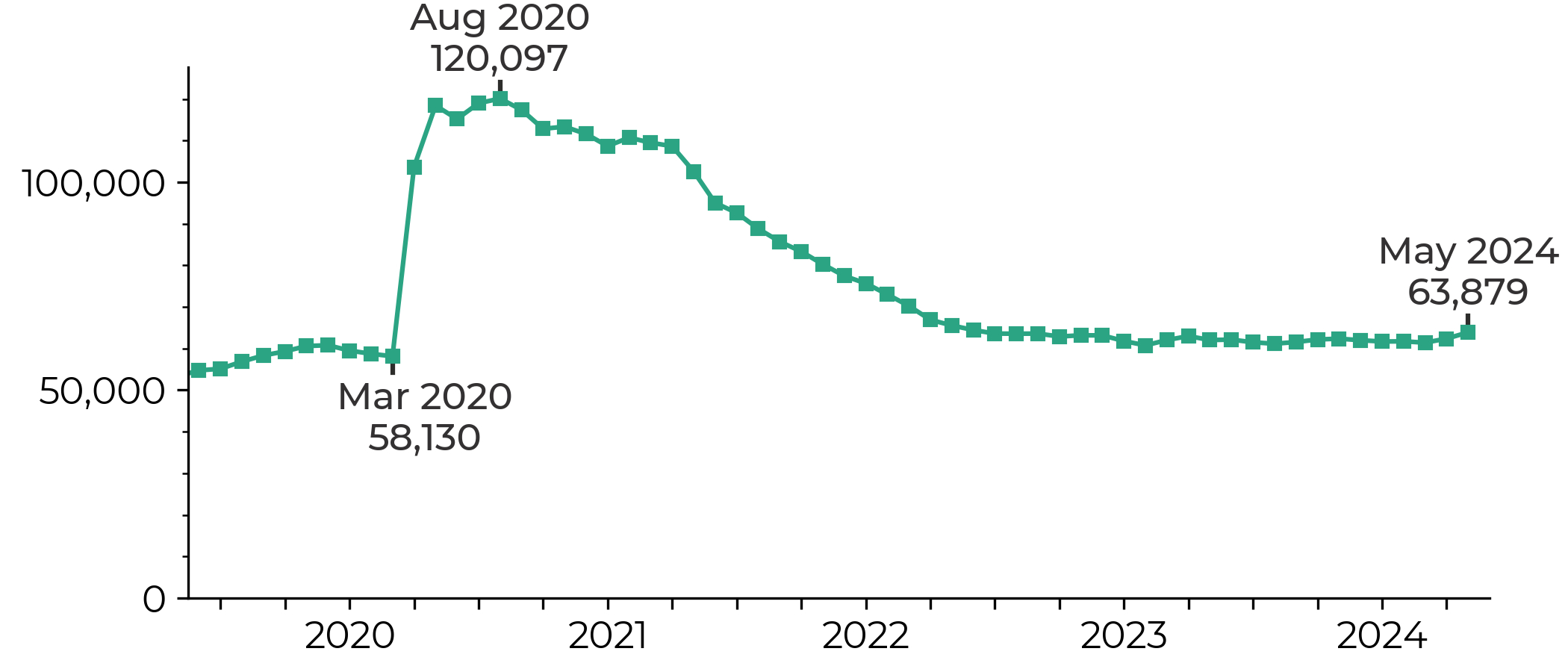With the cost of living and other economic factors in sharp focus, information on employment is invaluable. This article summarises a range of data published on the labour market in Wales.
What do the latest figures show?
The key trends in the labour market are:
- The increase in the number of payrolled employees in Wales has slowed in recent months and was 1.319 million in May 2024.
- In April 2024, the average weekly earnings were 5.9% higher than for April 2023 whereas the Consumer Price Index (CPI) inflation fell to 2.3% in February to April 2024.
- The fall in CPI inflation to 2.3% raises the expectation that the Bank of England will start cutting interest rates in the months ahead
- The number of job vacancies in the UK in March to May 2024 was 904,000, a decrease of 12,000 from the previous quarter (December 2023 to February 2024).
Number of payrolled employees
ONS has been working with HMRC to produce timely estimates of employees being paid through the pay as you earn (PAYE) system. The number of payrolled employees in Wales is above the pre-pandemic level but increases have slowed in recent months.
PAYE seasonally adjusted data; five years to May 2024

Source: ONS PAYE – seasonally adjusted
Average weekly earnings
Year-on-year increases in average weekly earnings across the UK are above the rate of inflation. Earnings data for Wales is published on an annual basis in the Annual Survey of Hours and Earnings. However the inflation rate is not available at a Wales level.
Year-on-year change in UK average weekly earnings and inflation

Source: Earnings and working hours and inflation and price indices, ONS
Vacancies
At a UK level ONS publishes an estimate of the number of job vacancies for the preceding three months. These estimates are based on the Vacancy Survey where ONS surveys employers across all sectors of the economy. From March to May 2024 there were a reported 904,000 job vacancies in the UK, a decrease of 12,000 from December 2023 to February 2024. Vacancy numbers fell on the quarter for the 23rd consecutive period in March to May 2024, down by 1.3% since December 2023 to February 2024 with vacancies falling in 9 of the 18 industry sectors.
The Vacancy Survey data is not available at a Wales level, however ONS publishes experimental indices of online job adverts. This includes information on several million job advert entries each month from across the UK, broken down by job category and UK countries. The post-pandemic surge in job vacancies peaked in February 2022 and has decreased overall since.
Index of estimated number of deduplicated online job adverts (Feb 2020 = 100)

Source: Online job advert estimates - Office for National Statistics (ons.gov.uk)
Benefits claimants
As more people move from legacy benefits to Universal Credit, the claimant count measure of unemployment has changed. The experimental headline data published by the ONS covers the number of people claiming Jobseeker’s Allowance plus those who claim Universal Credit and are required to seek work and be available for work.
The claimant count more than doubled at the start of the pandemic. The numbers steadily decreased from August 2020 to July 2022. Since July 2022 the claimant count has stayed between 60,000 - 64,000 with the claimant count in May 2024 standing 10% above pre-pandemic levels.
Claimant count for Wales; five years to May 2024

Source: NOMIS, ONS Claimant Count – seasonally adjusted
Notes: From May 2013 onwards these figures are considered Experimental Statistics. Under Universal Credit a broader span of claimants are required to look for work than under Jobseeker's Allowance. As Universal Credit Full Service is rolled out in particular areas, the number of people recorded as being on the Claimant Count is likely to rise.
Labour Force Survey
ONS is working on transforming the LFS to improve response rates and quality of estimates by changing the design of the survey, increasing the sample size and using new data collection methods. Figures from the transformed LFS are expected to be published in Autumn 2024. A blog by the Welsh Government Chief Statistician highlights concerns with using current LFS figures:
However, the ongoing challenges with response rates and levels mean that LFS-based labour market statistics will be labelled as official statistics in development until further review, and we continue to recommend caution when interpreting quarterly changes. We would recommend using the LFS data alongside the trends in other measures of the labour market, particularly Workforce Jobs (a quarterly measure of jobs), claimant count (the number of people claiming unemployment related benefits) and the RTI data from HMRC (the number of employees on payroll) to gain a clearer picture of the Welsh labour market.
Article by Joe Wilkes, Helen Jones and Ahmed Ahmed Senedd Research, Welsh Parliament






